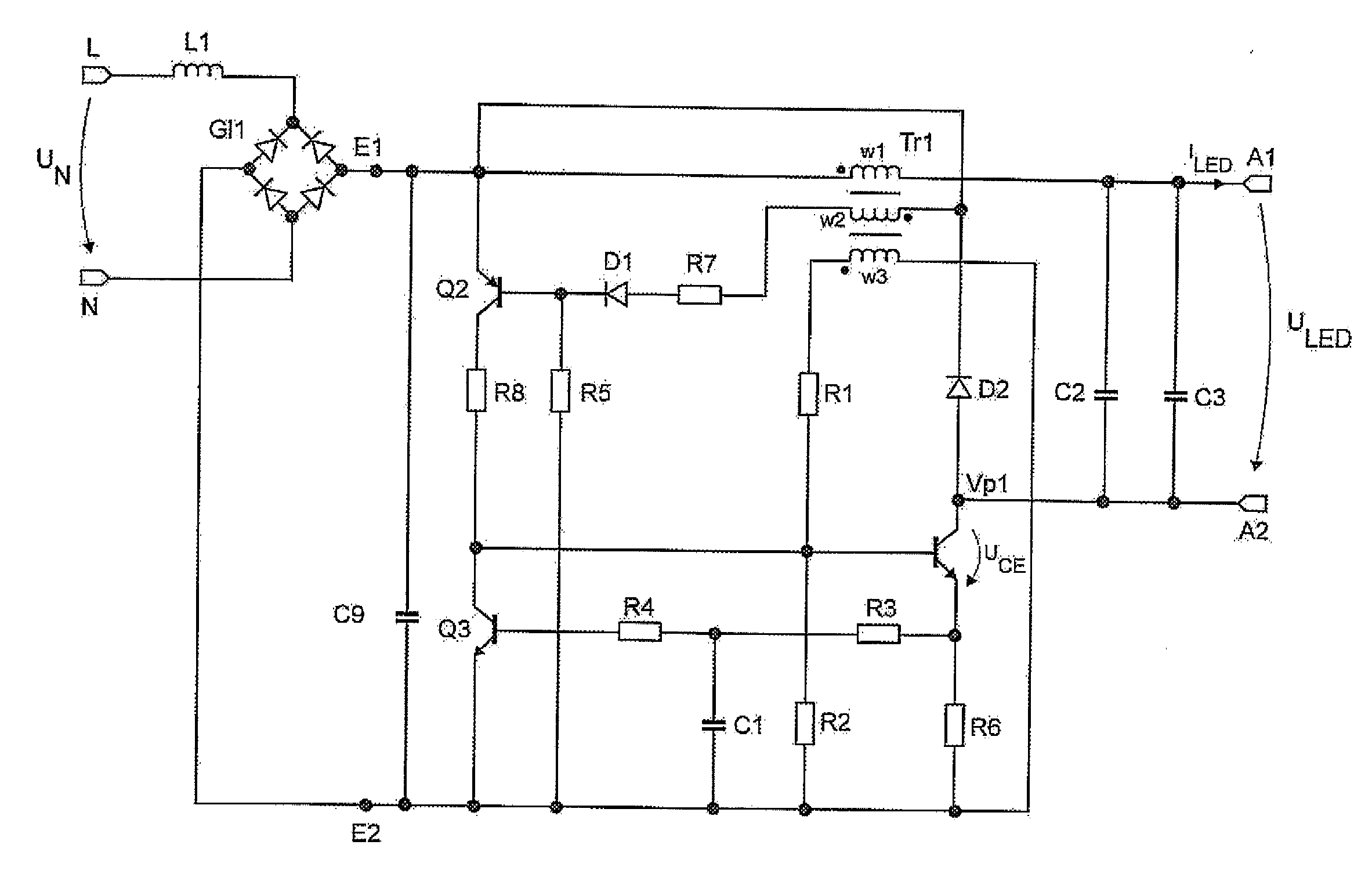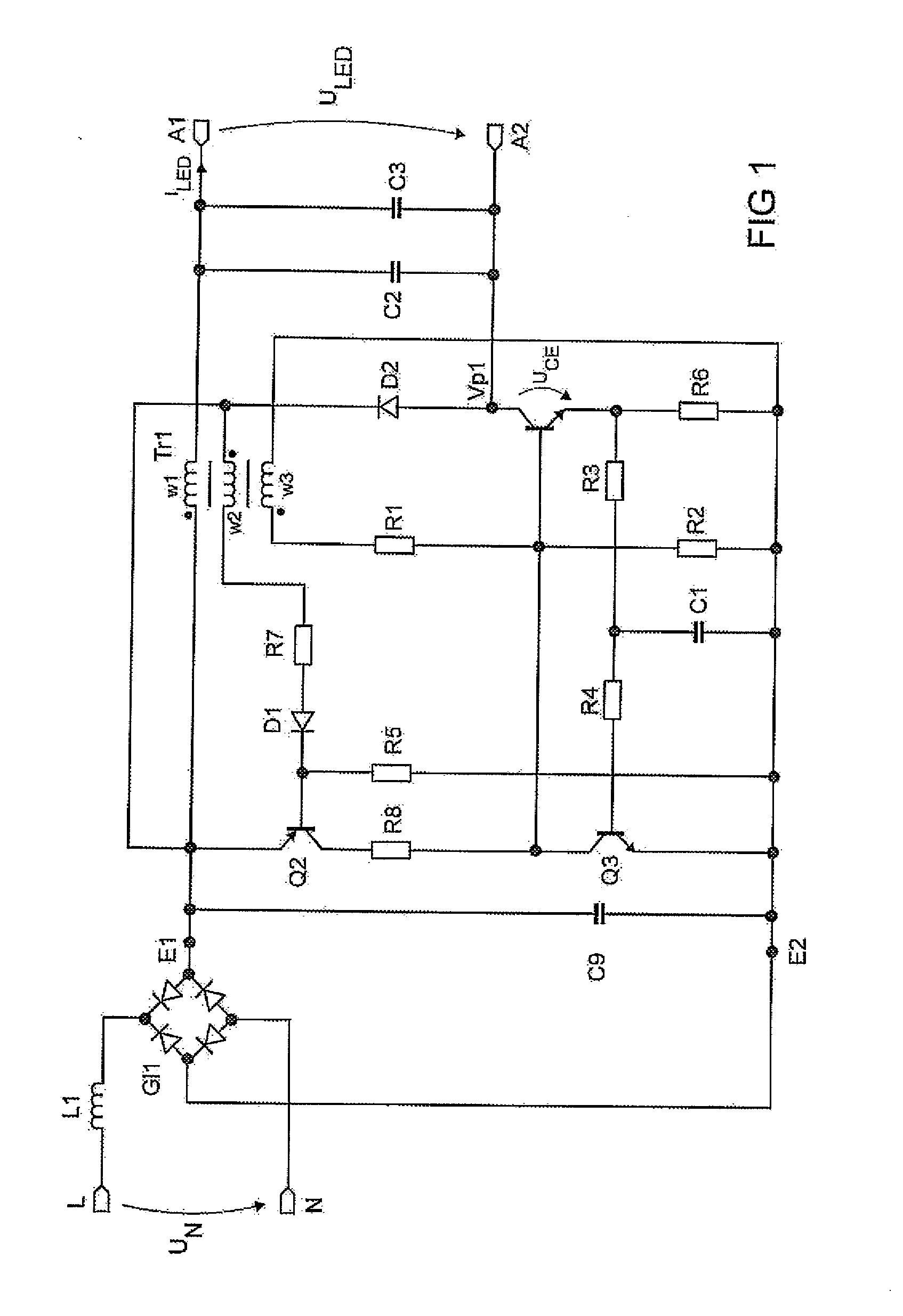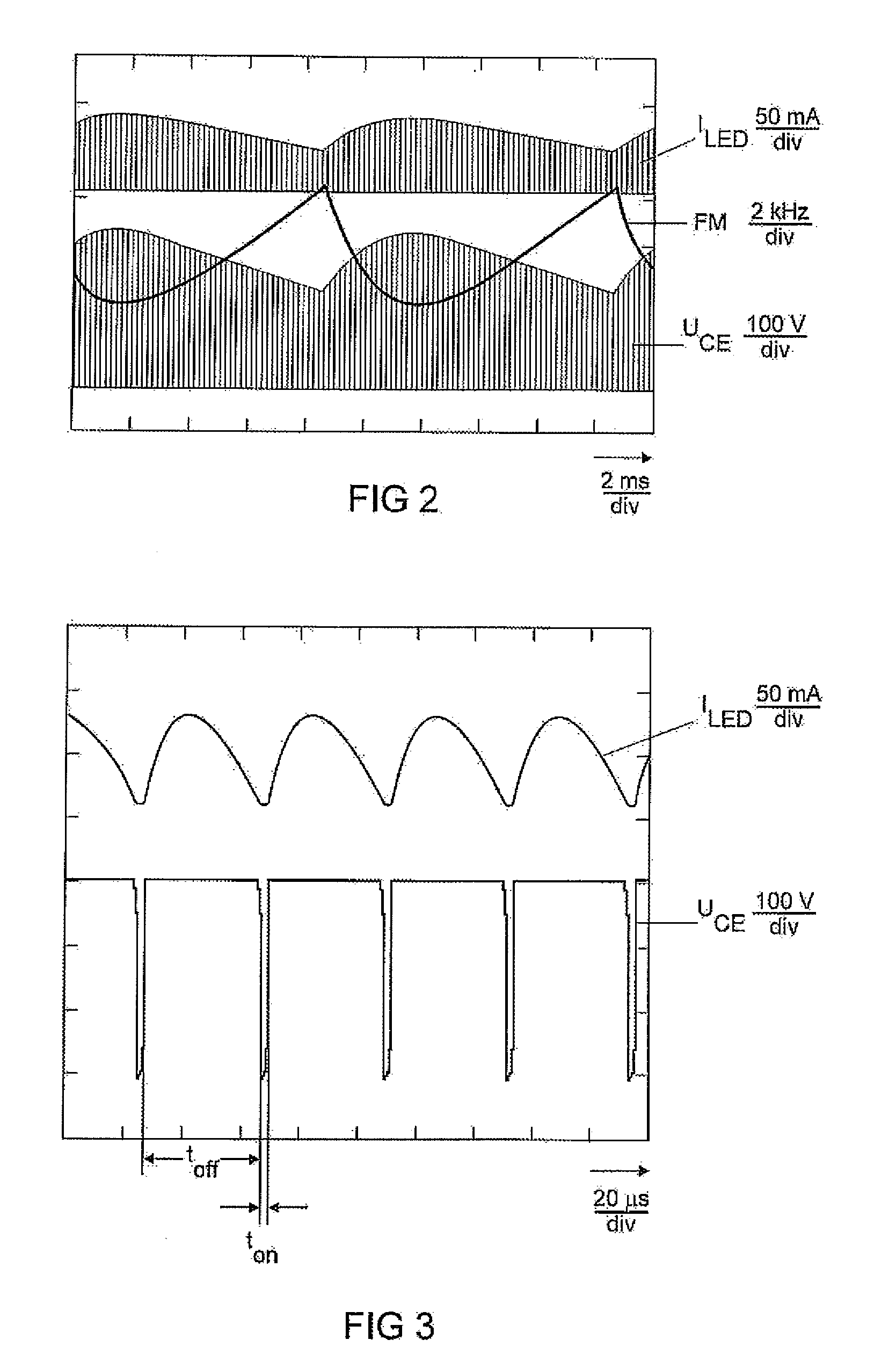Buck converter for making power available to at least one LED
a technology of buck converter and led, which is applied in the direction of electric variable regulation, process and machine control, instruments, etc., can solve the problems of high cost, high cost, and often exceed the budget provided for mass-produced products, so as to reduce ripple on current and no loss
- Summary
- Abstract
- Description
- Claims
- Application Information
AI Technical Summary
Benefits of technology
Problems solved by technology
Method used
Image
Examples
Embodiment Construction
[0003]The object of the present invention is therefore to develop a Buck converter of the type mentioned initially such that it can be produced at extremely low cost.
[0004]This object is achieved by a Buck converter having the features of patent claim 1.
[0005]The present invention is based on the discovery that very low-cost bipolar transistors can be used, for example as represented by the MPSA42 type known from the video field, in which currents required for a power LED on the one hand still have only a low current gain but on the other hand have to be switched off at a defined time, in order that a defined current is likewise produced for the LED.
[0006]The invention is now furthermore based on the load on the switch being reduced by coupling the Buck diode and the Buck main switch in series between the first and the second input connection, wherein the connecting point between the Buck diode and the Buck main switch is coupled to the second output connection. The first connection...
PUM
 Login to View More
Login to View More Abstract
Description
Claims
Application Information
 Login to View More
Login to View More - R&D
- Intellectual Property
- Life Sciences
- Materials
- Tech Scout
- Unparalleled Data Quality
- Higher Quality Content
- 60% Fewer Hallucinations
Browse by: Latest US Patents, China's latest patents, Technical Efficacy Thesaurus, Application Domain, Technology Topic, Popular Technical Reports.
© 2025 PatSnap. All rights reserved.Legal|Privacy policy|Modern Slavery Act Transparency Statement|Sitemap|About US| Contact US: help@patsnap.com



